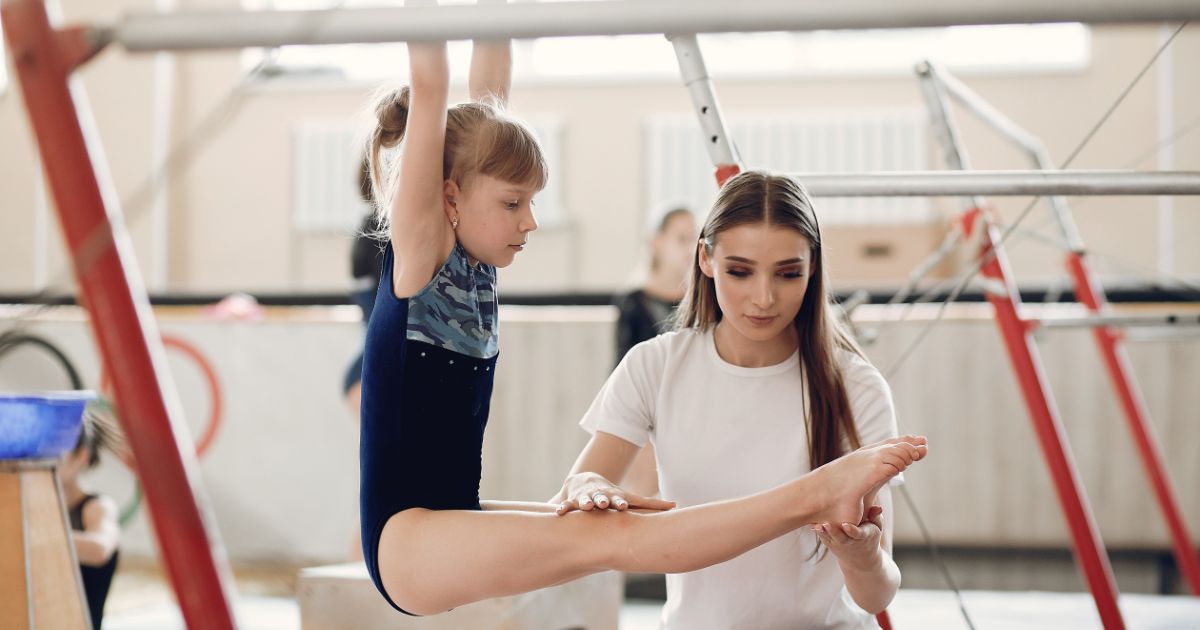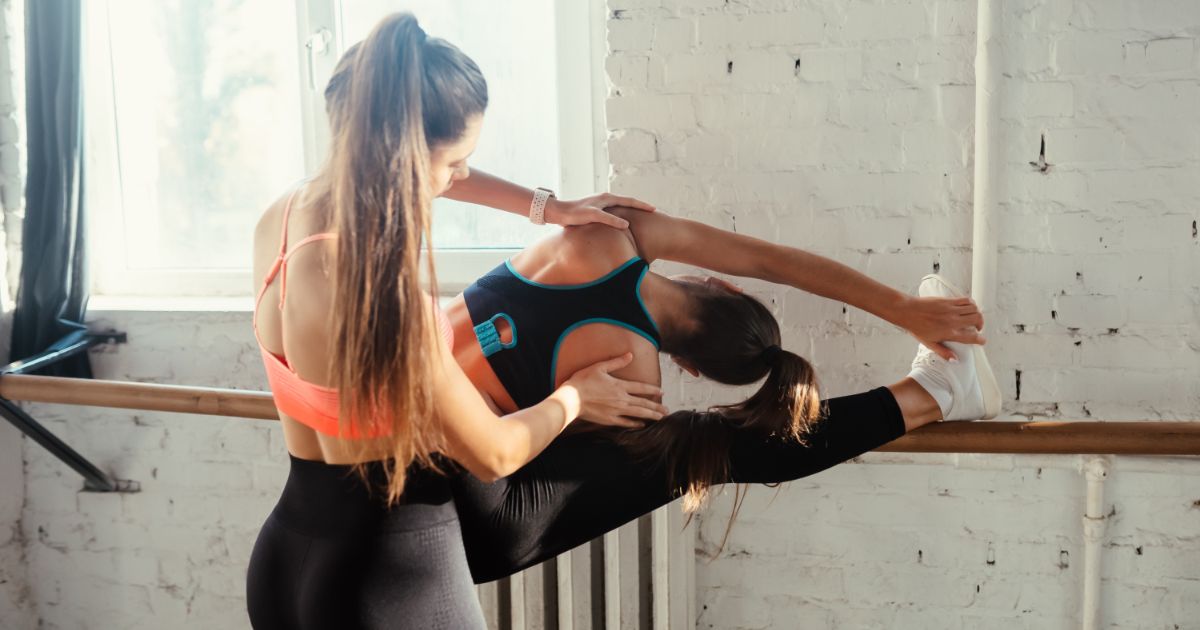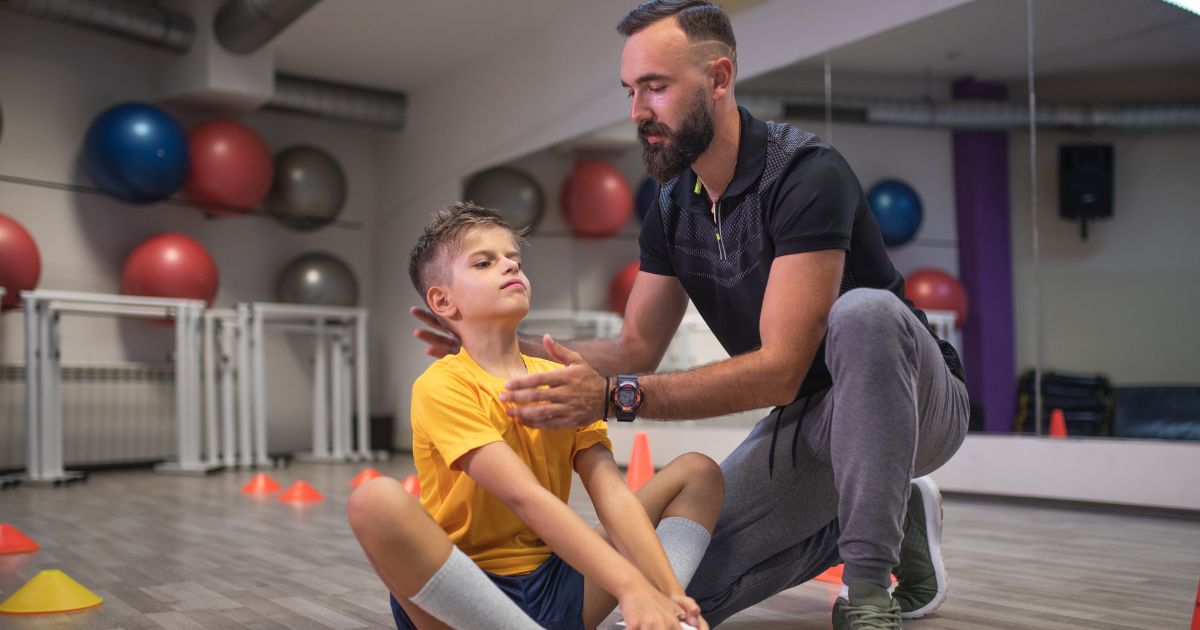How to Become an Acrobat Trainer? Definition & Responsibilities
The art of acrobatics has captivated audiences for centuries, blending physical prowess with grace, creativity, and breathtaking spectacle. From the dazzling flips of gymnasts to the intricate aerial performances of circus artists, acrobatics showcases the incredible capabilities of the human body. So, do you know behind every jaw-dropping performance is often an acrobat trainer?
You may wonder what exactly an acrobat trainer does or how to become one yourself. This article will answer all your questions, from their everyday tasks to the path you can take to become one yourself. So, let's unveil the secrets behind these skilled individuals who help others reach for gravity-defying feats and create heart-stopping tumbles.
What is an Acrobat Trainer?

An Acrobat Trainer is a professional who specializes in teaching and training individuals in acrobatic skills and techniques. These trainers work with students of various ages and skill levels to develop their physical abilities, including strength, flexibility, balance, coordination, and body control. Acrobat Trainers may work in settings such as gymnastics clubs, circus schools, dance studios, fitness centers, and performing arts companies.
What does an Acrobat Trainer do?

An Acrobat Trainer's role can vary depending on the specific field of acrobatics they are expertise in, such as circus arts, gymnastics, dance, cheerleading, or parkour. Here's a detailed look at what an Acrobat Trainer typically does:
Skill Development
Acrobat trainers develop students' skills in various physical, technical, and mental aspects of performance.
Acrobat trainers design strength training programs to build core, upper body, and lower body strength, essential for performing complex acrobatic moves. Regular stretching routines are implemented to increase flexibility for executing stunts effectively. Cardiovascular exercises are also included to improve overall stamina, so students can maintain high levels of performance during routines.
Trainers teach fundamental acrobatic techniques, such as rolls, handstands, and flips, building a solid foundation for more advanced skills. Skills are broken down into progressive steps, based on each step, students master components before moving on to more complex movements. Safety protocols and spotting techniques are emphasized to prevent injuries, as well as, build students' confidence in their abilities.
Mental preparation is also underlying in acrobatics. Mental exercises and drills are used to enhance concentration, which is necessary for performing acrobatics under pressure. Trainers teach visualization techniques to aid students in mentally rehearsing their routines. Methods for managing performance anxiety and stress are introduced, making students perform their best in various situations.
Safety and Injury Prevention
Acrobatics is a high-risk environment due to the physical demands, complex maneuvers, height considerations, and the potential for equipment-related accidents. While the risks are significant, they can be managed through comprehensive training, adherence to safety protocols, and a focus on injury prevention. In this process, Acrobat Trainers play an important role in ensuring the safety of their students in the high-risk environment of acrobatics.
At the beginning of each training session, Acrobat Trainers lead dynamic stretching exercises designed to increase heart rate, improve blood circulation, and prepare muscles and joints for strenuous activity. This warm-up process reduces the risk of strains or sprains. Cool-down techniques such as static stretching help relax the muscles after the session. Trainers also incorporate breathing exercises during the cool-down phase to aid in recovery.
Progressive skill development is another crucial aspect of injury prevention. Trainers use a step-by-step method to teach acrobatic skills, based on that, students master basic movements before advancing to more complex techniques. This gradual progression builds a solid foundation and reduces the likelihood of injuries caused by attempting difficult maneuvers prematurely. Trainers carefully monitor each student's progress, tailoring training plans to address individual needs and adapting exercises to accommodate specific abilities or limitations.
Acrobat Trainers are the person who takes responsibility equipped with appropriate mats and padding to cushion falls or reduce impact. For high-risk maneuvers, trainers may use harnesses, spotting belts, or crash mats to provide additional support. These tools have a big impact on students to build confidence in practicing challenging moves with a reduced risk of injury.
In the event of an injury, immediate response and management are usually assigned to Acrobat Trainers. They are trained in first aid and CPR, enabling them to handle minor injuries or emergencies swiftly. For students recovering from injuries, trainers develop rehabilitation plans to support recovery and gradually reintroduce them to training. This careful management prevents further injury and creates a safe return to full activity.
Motivation and Support
Acrobat trainers foster an environment that encourages growth, resilience, and success.
Trainers assist students set realistic goals, both short-term and long-term. By breaking down the journey into smaller, manageable steps, students can see their progress more clearly to stay motivated.
Trainers also use their own passion and enthusiasm for acrobatics to inspire their students. They are role models dedication comes with the perseverance needed to succeed. Their enthusiasm can be contagious, igniting a similar passion in their students.
Moreover, trainers provide practical advice and strategies to overcome obstacles. They teach students how to handle setbacks and failures constructively, turning them into learning opportunities. This support makes students develop their acrobatic skills and grow as resilient individuals.
Evaluation and Feedback
Acrobat trainers conduct regular evaluations of students’ performance. These assessments are comprehensive, covering various aspects such as technique, form, execution, and overall presentation. Sensitivity combined with the ability to evaluate will support them in identifying strengths or areas for improvement, providing a clear picture of the student's current skill level.
Trainers' responsibility provide specific, actionable feedback, highlighting what students are doing well and what needs refinement. So, students can understand their progress and what steps they need to take to advance their skills.
In addition to technical feedback, trainers offer insights on artistic expression and performance quality. They evaluate how well students interpret the music, convey emotions, and engage with the audience. Students will develop not only technical proficiency but also the artistic and expressive aspects of their performance.
How to Become an Acrobat Trainer?

Becoming an Acrobat Trainer requires a combination of skill development, education, certification, and practical experience. This path can vary depending on the specific field of acrobatics you wish to specialize in, such as gymnastics, circus arts, dance, cheerleading, or fitness-based acrobatics. Here’s a detailed step-by-step guide on how to become an Acrobat Trainer:
Step 1 - Develop Your Acrobatic Skills
The first step in becoming an Acrobat Trainer is to develop your own acrobatic skills. You should choose a specialty that aligns with your interests and abilities, such as gymnastics, circus arts, dance, cheerleading, parkour, or fitness acrobatics. It’s essential to join classes or workshops that focus on your chosen specialty, working with experienced trainers or mentors to improve your skills.
Step 2 - Gain Relevant Education
You may pursue a degree related to physical education, sports science, and kinesiology at universities or specialized institutes. Additionally, you can enroll in certification or diploma courses in acrobatics, circus arts, or gymnastics. A thorough understanding of anatomy and physiology is indispensable for teaching acrobatics safely and effectively, so online courses or textbooks on these subjects are also beneficial.
Step 3 - Obtain Important Certifications
To make sure that you can respond swiftly in emergencies, obtaining First Aid and CPR certification is an important choice. Moreover, you should seek specific certifications relevant to the acrobatic field you wish to pursue. For instance, if you want to become a gymnastics coach, consider certifications from organizations like USA Gymnastics or British Gymnastics. For those interested in circus arts, programs from organizations like American Circus Educators (ACE) are valuable. These certifications have a strong effect on boosting your credibility and reputation in the industry.
Step 4 - Gain Practical Experience
Practical experience is a component that can not be replaced in becoming an effective Acrobat Trainer. Start by assisting experienced trainers to learn teaching techniques, class management, and safety protocols. Internships at acrobatics schools, gymnastics centers, or circus schools offer deep insights into the career. Teaching beginner classes or private sessions is also a great way to develop your teaching skills and build a portfolio of work, including student progress and success stories.
Step 5 - Build a Professional Network
Building a professional network is vital for career development. Attend industry events, competitions, and workshops to connect with other professionals and trainers. Joining online forums or social media groups related to acrobatics and coaching can also be valuable for networking. Membership in professional associations provides access to resources, networking opportunities, and professional development.
Step 6 - Start Your Career
Once you have enough experience and knowledge, it’s time to start your career. You can apply for positions at acrobatics schools, gymnastics centers, dance studios, or circus companies. Additionally, offering private lessons or personal coaching sessions for individuals seeking to improve their acrobatic skills is a viable option.
Creating an online presence through a website or social media platforms will help you promote your services and attract clients. If you have gained enough experience and reputation, consider opening your acrobatics training facility, which requires careful business planning and obtaining the necessary licenses.
Step 7 - Continue Professional Development
Continuing professional development to enhance your standing in the industry. Let's regularly participate in workshops, seminars, and training camps to stay updated on the latest techniques and safety standards. Pursuing advanced certifications in your specialty also adds to your credibility and expertise. Continuous learning assists you in staying competitive and knowledgeable in the field.
Conclusion
While the spotlight is often on the acrobats themselves, there’s a critical figure working behind the scenes: the Acrobat Trainer. These trainers are the unsung heroes, providing the essential coaching, support, and inspiration that transform dreams into reality. In this article, we discovered what exactly an Acrobat Trainer does and what it takes to become one.
Remember, the most important aspect is your love for acrobatics and the desire to empower others. To turn your dreams into reality, join Skilltrans courses today. We will equip you with the necessary skills and lead you on a brilliant path to success.

Meet Hoang Duyen, an experienced SEO Specialist with a proven track record in driving organic growth and boosting online visibility. She has honed her skills in keyword research, on-page optimization, and technical SEO. Her expertise lies in crafting data-driven strategies that not only improve search engine rankings but also deliver tangible results for businesses.



